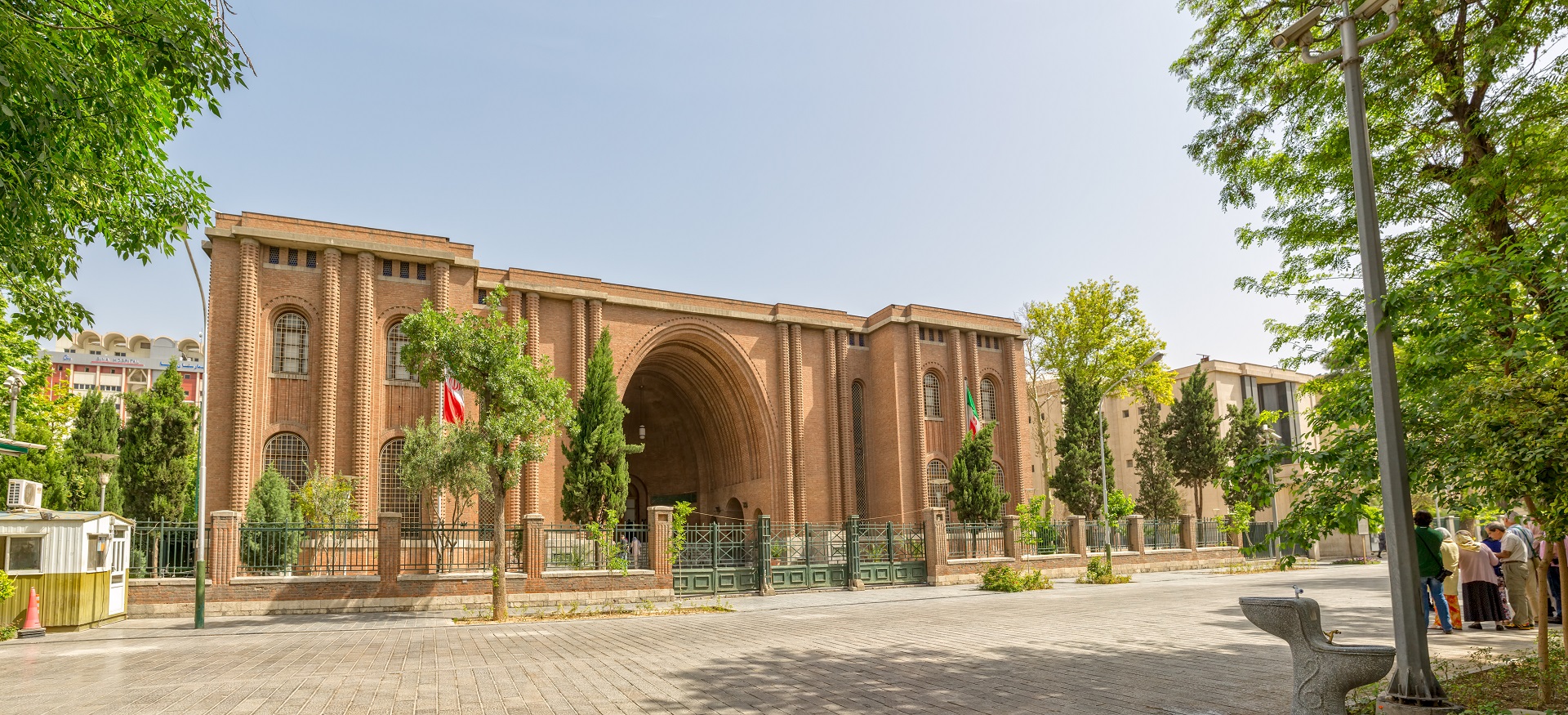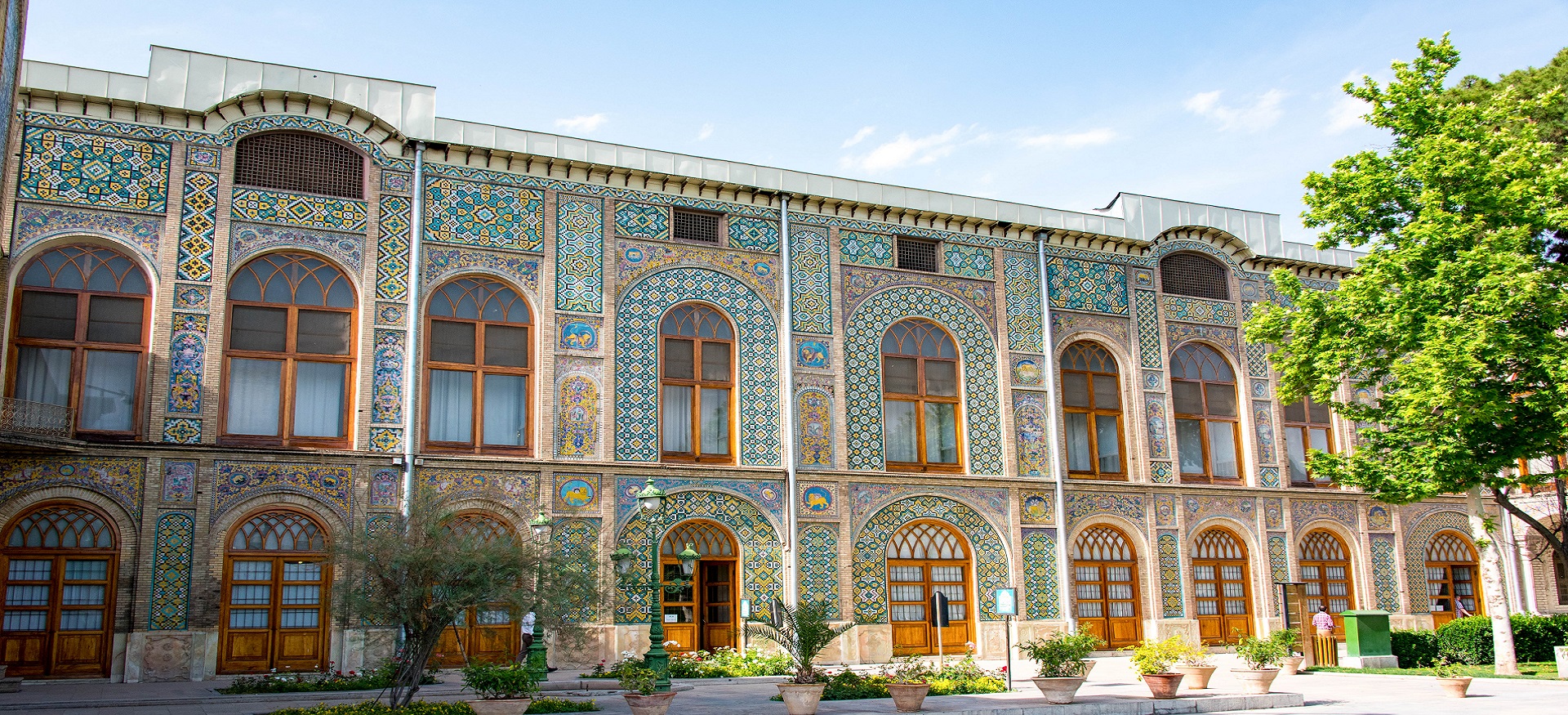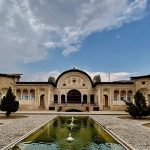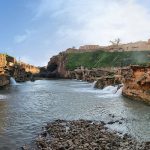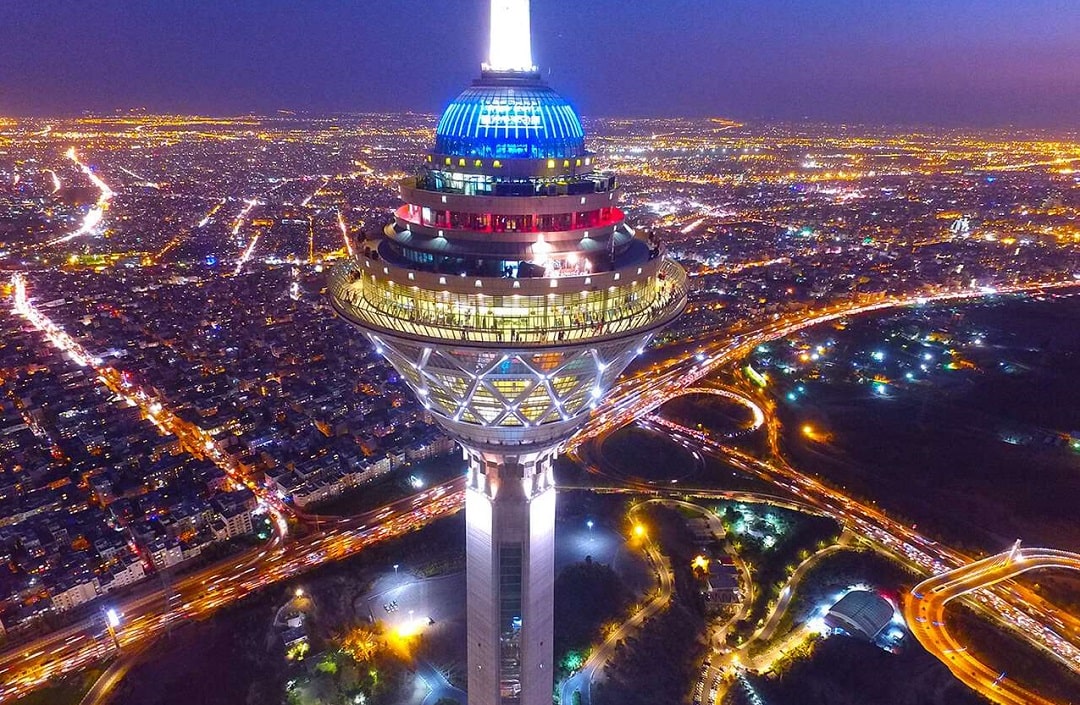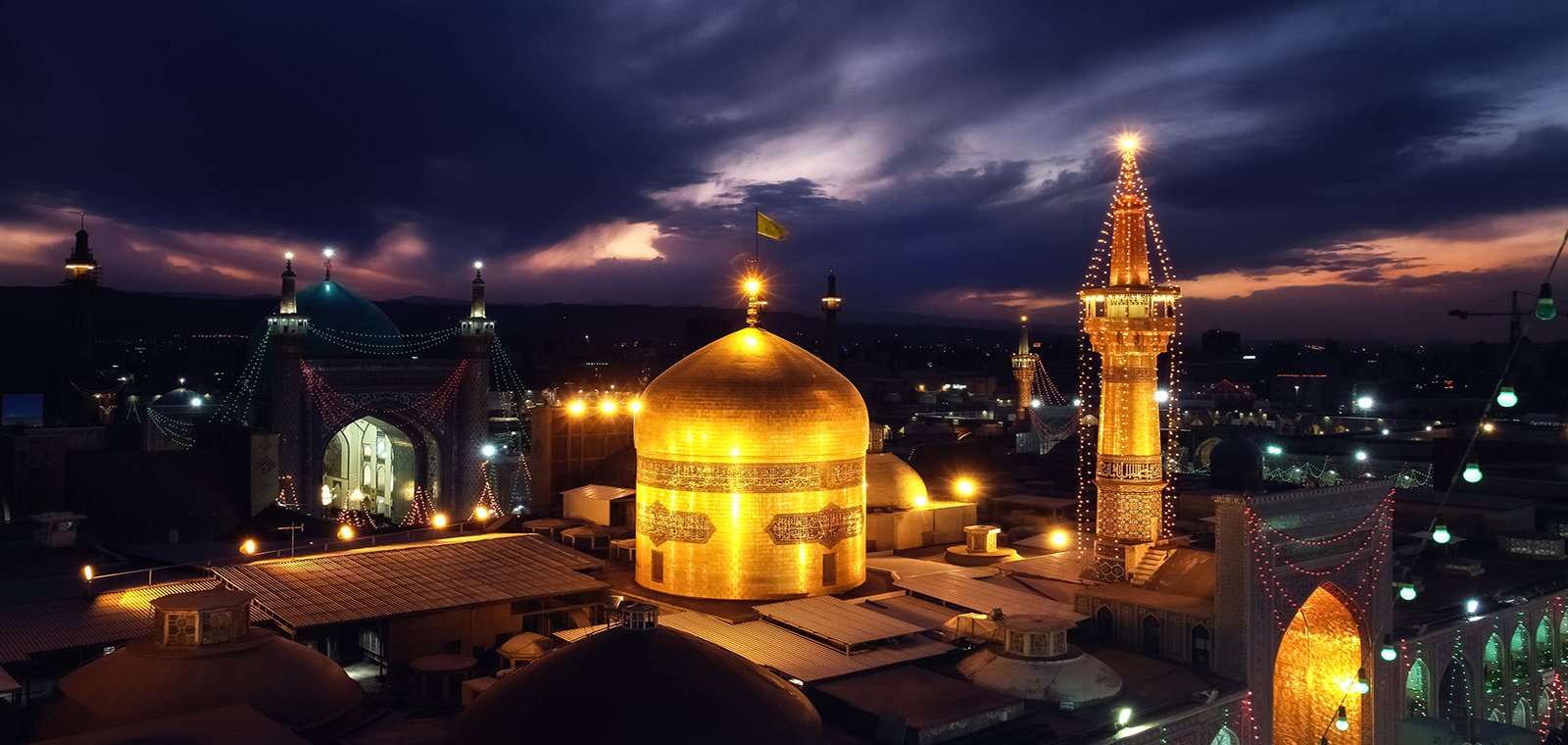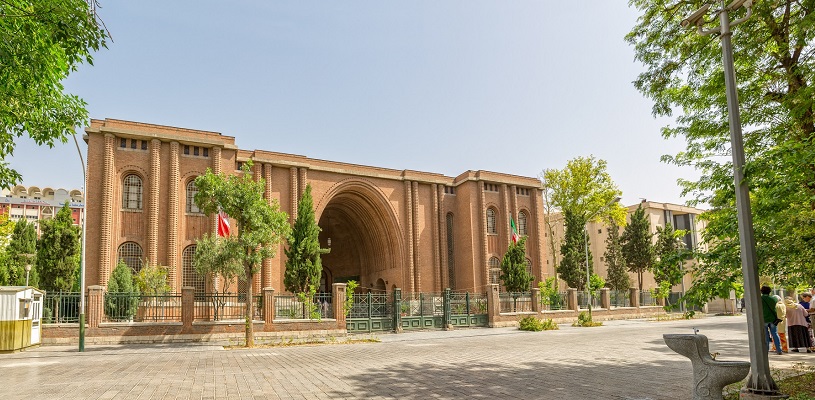
National Museum of Iran (Tehran)
National Museum of Iran, located in Tehran, is the largest and richest archaeological and historical museum in Iran. The Tehran National Museum of Iran, with a history of about 80 years, preserves valuable historical artifacts that have been transferred from one generation to another. About 300,000 valuable and precious objects exist in this museum, which are from the Paleolithic era to the present. Therefore, these features have led to the introduction of the Tehran National Museum of Iran as a special place among other museums in Iran.
Contents
- 1 Why Visit Tehran National Museum of Iran?
- 2 Introducing Tehran National Museum of Iran
- 3 Tehran National Museum of Iran – the Museum of Ancient Iran
- 4 Tehran National Museum of Iran – Let’s dig deeper:
- 5 Tehran National Museum of Iran – Museum of Islamic Arts
- 6 More About Islamic Museum Section in Tehran National Museum of Iran
- 7 The Most Famous Artifacts of Tehran National Museum of Iran
- 8 Facilities of Tehran National Museum of Iran
- 9 More about the National Museum of Iran
- 10 Like to pay a visit to the Iran National Museum?
- 11 The National Museum of Iran Tour
- 12 Tehran National Museum of Iran on Map
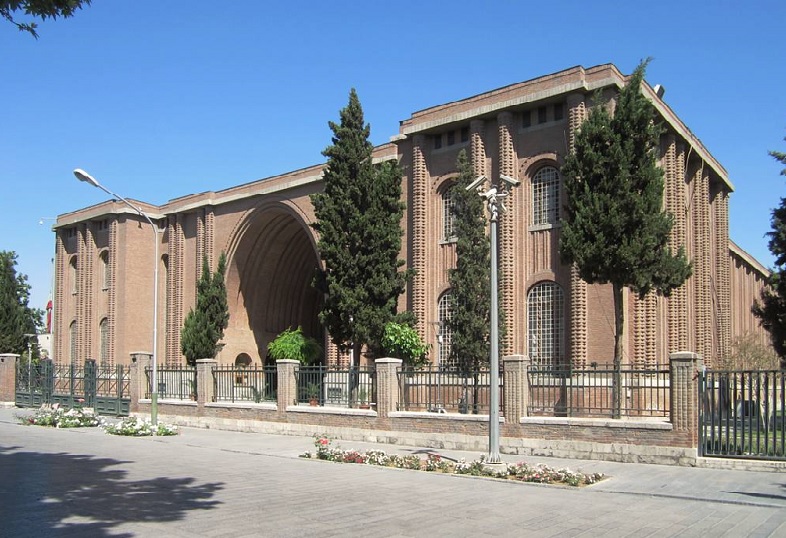
Facade, the Tehran National Museum of Iran – Tehran, Iran
Why Visit Tehran National Museum of Iran?
- The Tehran National Museum of Iran is known as the reference museum and the most important archaeological Iranian museum.
- Iran national museum has a special advantage in terms of variety, volume, type and quality of the objects.
- Valuable and precious objects from Paleolithic era to the present are in this museum.
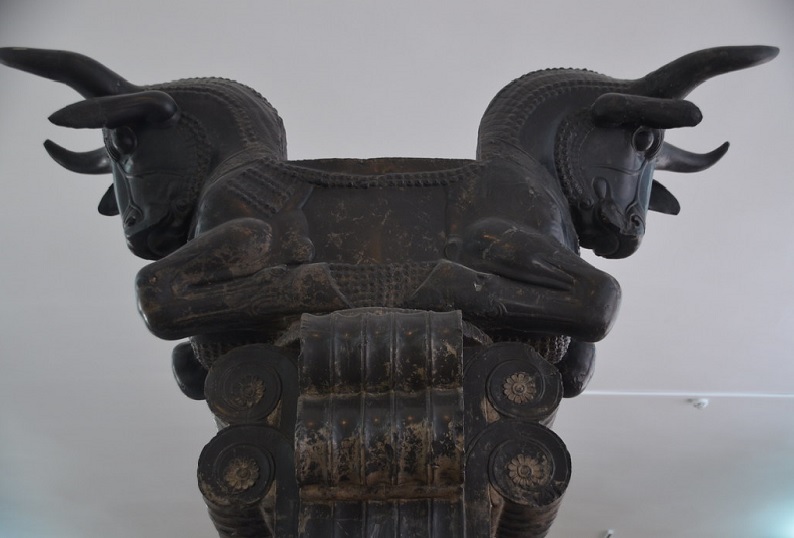
Statues in Tehran National Museum of Iran – Tehran Attractions
Introducing Tehran National Museum of Iran
In the complex of Iran National Museum, most of the archeological relics date back from the Paleolithic to the Islamic period. They are displayed in two museums, “museum of Ancient Iran” and “museum of Islamic Period”. The building of the museum was inspired by Kasra Arch (the most prominent monument of Sassanid Empire and the widest arch of ancient architecture. It is in Ctesiphon, Iraq) and designed by Andre Godard, a French architect, built by two Iranian architects.
Looking at the Iran national museum building, you will see two large buildings and several small buildings behind the museum enclosure. The building on the left is the Museum of Ancient Iran. And the high building on the right with the stone facade, is the Museum of Islamic Art and the conference center of National Museum of Iran. Both buildings are inspired by Sassanid architecture.
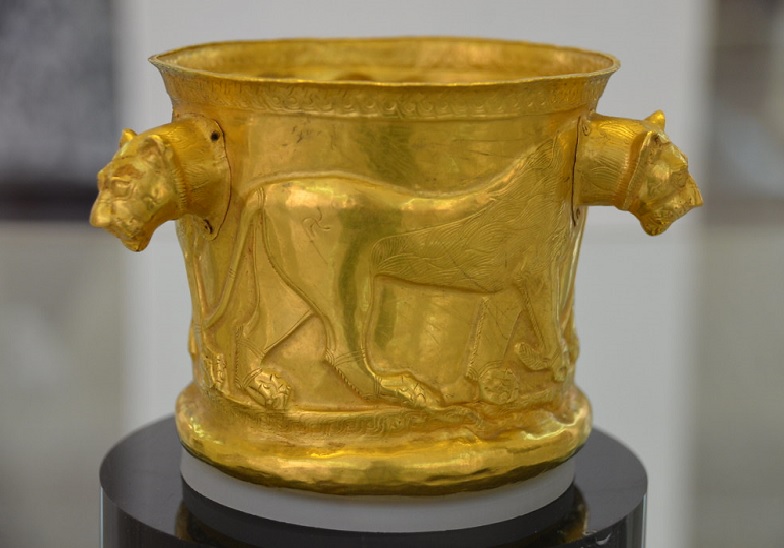
Tehran National Museum of Iran – Gold Vessels, Attractions in Iran
Tehran National Museum of Iran – the Museum of Ancient Iran
Museum of Ancient Iran has exhibited the country’s historical artifacts in two parts and two separate floors. The second floor of ancient Iran museum belongs to the works of pre-historic era, and the first floor is for the works of the historical era. In the pre-historic section, you can see artifacts from the Paleolithic era to the late fourth millennium BC. The artifacts of this section are displayed in seven halls, and it is very interesting to know each of them. In “the Museum of Historical Era”, there are artifacts from the end of the fourth millennium BC to the end of Sassanid era.
On the second floor of the building, there are gold objects and various types of discovered jewelry and stone inscriptions. For example, when Cyrus Cylinder was brought to Iran, it was kept on the second floor of the Museum of Ancient Iran.
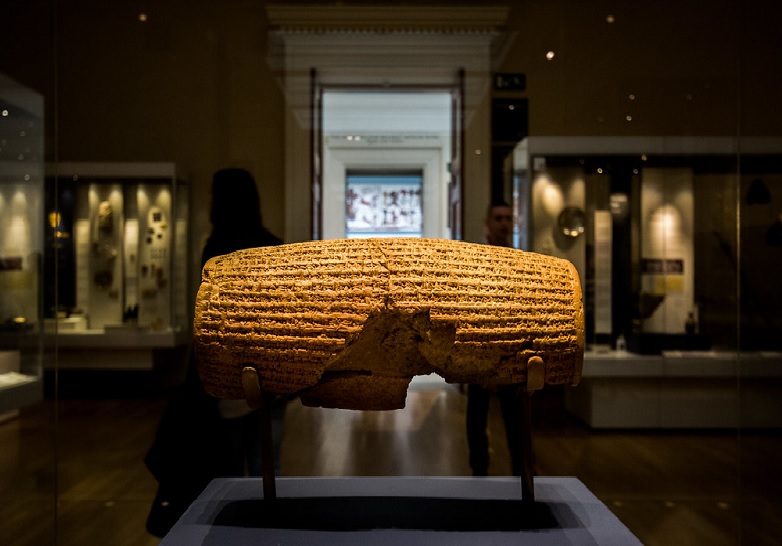
Museum of Ancient Iran – The Cyrus Cylinder
Tehran National Museum of Iran – Let’s dig deeper:
In the first hall of Ancient Iran Museum, you see objects that are from about 1 million to 250 thousand years old. The oldest man-made structures on the Iran Plateau are in this museum. Humans who lived there, used these tools to hunt animals, carve wood, and so on. The second hall of the museum displays the artifacts of early modern humans from more than 200,000 years ago. The tools in this section include a variety of tools made of flint, sharp tools for hunting and butchering animals, and fossil remains of animals inside the caves.
In the next section, you will see the 40,000-year-old artifacts of the intelligent human. The artifacts of this period include decorative objects such as shell pendants, animals’ teeth and bony tools. It is interesting to know that this period of history ends with the beginning of the Ice Age. In the next section, you will see the process of human sedentism, construction of rural houses from adobe, and the beginning of agriculture. Following these changes, making of pottery dishes took place. You can see some of these pottery in the museum.
Entering the historical period, glass tubes, inscribed studs and brick inscriptions are among artworks of Elamites that are in the museum. Going through the Bronze and Iron Ages, we reach a brilliant era in the life of Persian people: A powerful empire called Achaemenid. It was during this era that coins were minted for the first time by the order of Darius the Achaemenid. Plus, the techniques of stone cutting and metalworking also flourished at this age. In this part of the museum, you will see beautiful stone and metal works from this era.
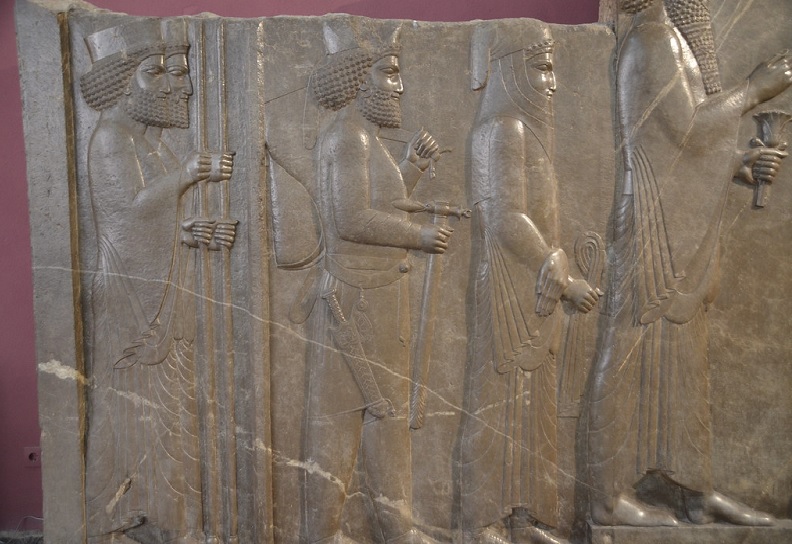
Tehran National Museum of Iran – Tehran, Iran
Tehran National Museum of Iran – Museum of Islamic Arts
Museum of Islamic Arts is like an octagon or a cruciform with stone façade. It is a place for keeping post-Islamic artwork. In this section of Tehran national museum of Iran, all kinds of Islamic arts are on 2 floors and 6 separate halls. These artifacts include calligraphy, gilding, tiling and alter making.
To visit the museum, you must first start from the second floor and then go to the first floor. The halls of Early Islam, Seljuk and Ilkhani are on the second floor. And the halls of Quran, Timurid, Safavid, Afshar, Zand and Qajar are on the first floor.
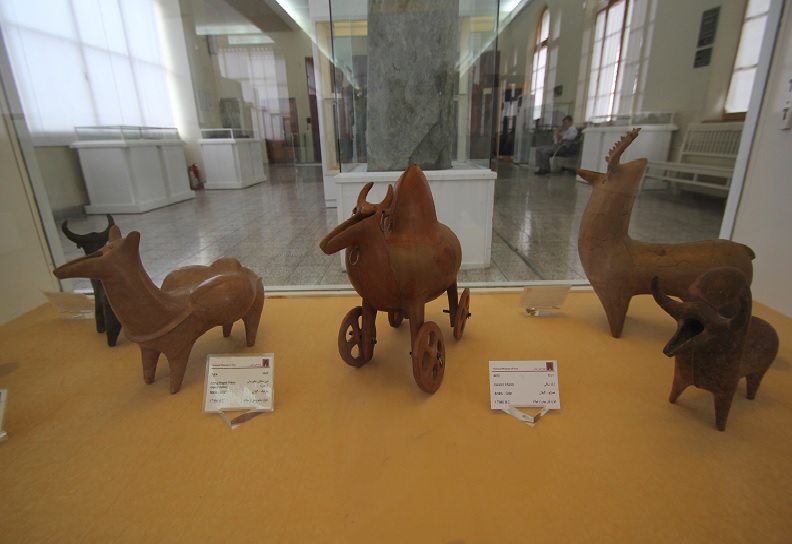
Handicrafts in Tehran National Museum of Iran
More About Islamic Museum Section in Tehran National Museum of Iran
In the Early Islam hall, you will see that calligraphy became very popular in this era. Thus Qurans which are written on deer skin, are one of the most important works of this era. Pottery, glassmaking, enameling (painting on glaze), metal objects, metal objects with silversmithing and goldsmithing and latticework that are in the museum are likewise among the best arts of Seljuk era.
Ilkhanids dominated Iran after the Mongol invasion and also after a long period of inactivity in art. You can see beautiful artifacts of this era in the Tehran National Museum of Iran. They include metalwork, silversmithing, goldsmithing, bronze objects, latticed pottery, enameled pottery and gold-plated pottery. Safavid era is a flourishing period for Islamic art. Calligraphy was the art that became popular in Safavid era. You can also see this lasting art in exquisite Qurans which remained in the museum. Oil paintings, calligraphy on cloth, the art of carpet weaving and also seven-color tiles are some of the amazing works of this era in the museum.
The last hall of the Islamic Museum is the Quran Hall. This hall is located in a space under the central dome and on the first floor of the museum. This hall has many exquisite and beautiful Qurans. One of the most beautiful works in this hall is a page of an exquisite and large Quran. It is located in the center of the hall. It is said that Nader Shah, a king of Afshar era, has carried this Quran with him during the war.
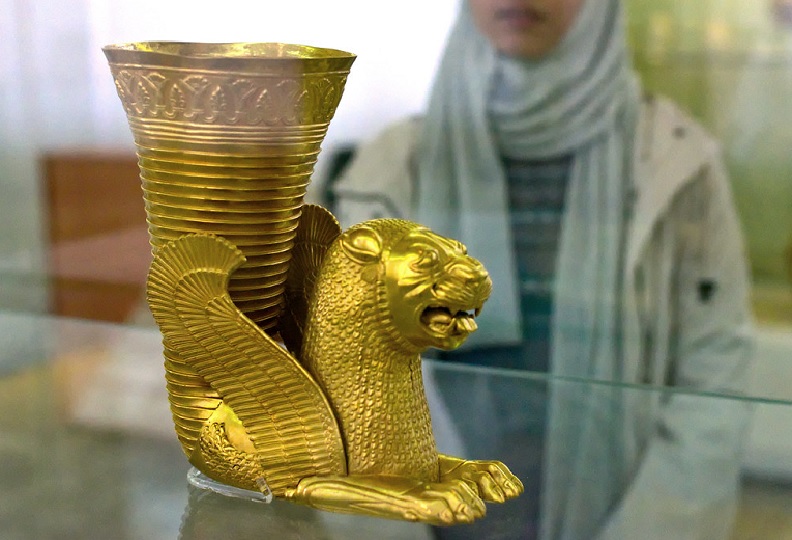
Gold Vessels – Tehran National Museum of Iran
The Most Famous Artifacts of Tehran National Museum of Iran
- Salty Man (Pieces of a man’s bones belonging to the late Parthian or early Sassanid era)
- Statue of Darius (An Egyptian marble statue depicting Darius I of Achaemenid)
- The capitals and stairs of Persepolis (capitals and stairs that were in Persepolis in Achaemenid era)
- Parthian Soldier (A bronze statue depicting a Parthian soldier)
- Pottery Cow Statue from Chogha Zanabil (A pottery cow placed on the entrance gate of Chogha Zanabil Ziggurat by order of Elam’s king and as a guard)
- Three-dimensional Cup (The goat engraved on this cup goes to the tree in five movements to feed on the tree branch. These five movements make the first animation in the world)
- Altar of Heaven (A valuable altar that first was in a shrine but now it is in the National Museum)
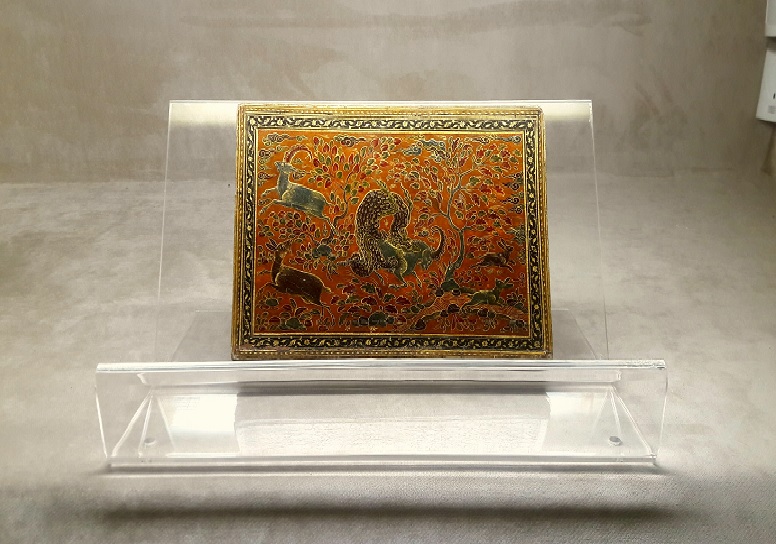
Tehran National Museum of Iran – Persian Art
Facilities of Tehran National Museum of Iran
National Museum of Iran, as the reference museum of the country, is considered as one of the richest and most important museums. According to its importance, it has suitable facilities such as:
Library:
The Library of National Museum is one of the most important libraries in the field of archeology and history. In this library there are manuscripts and lithographs such as lithography of the Holy Quran. This Quran belongs to Qajar era.
Gallery:
In the yard of National Museum, there is a handicraft gallery. Therefore, you can visit and buy handicrafts after visiting the museum.
Restaurant Café:
After a tour in the depths of Persian history, you can enjoy drinking a cup of tea or coffee. So you can spend some time in the café restaurant of National Museum.
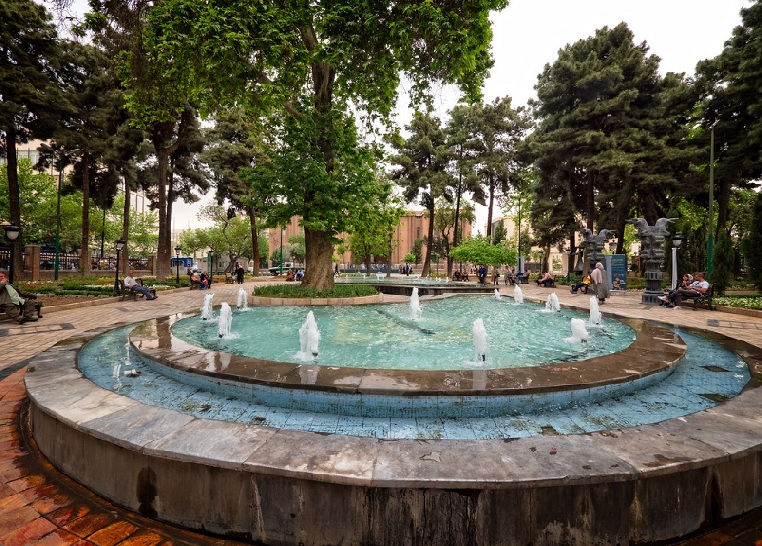
More about the National Museum of Iran
Visit hours
Spring and summer from 9 a.m. to 7 p.m.
Fall and winter from 9 a.m. to 5 p.m.
Visit Days
Every day except some of public holidays
Nearby Attractions
There are beautiful and interesting attractions near National Museum. Some of them are: Treasury of National Jewels, many of royal jewels of Iran from the Safavid, Afshar, Qajar and Pahlavi era are in this museum. Golestan Palace, a stunning palace in Tehran with beautiful buildings and a great garden. Grand Bazaar, an amazing place for visiting the architecture and shopping.
Where to Eat Near National Museum of Iran
Termeh Restaurant
Shater Abbas Restaurant
Adel Restaurant
Baharan Restaurant
Like to pay a visit to the Iran National Museum?
Then jump aboard our Top Museums of Tehran tour or one of our multi-day Cultural Tours.
Keywords: national museum Tehran, Persian artifacts museum, museum of ancient Iran photos, museum in Tehran, ancient Iran museum, national museum Iran, Termeh restaurant, Iranian museum, historical places in Tehran

